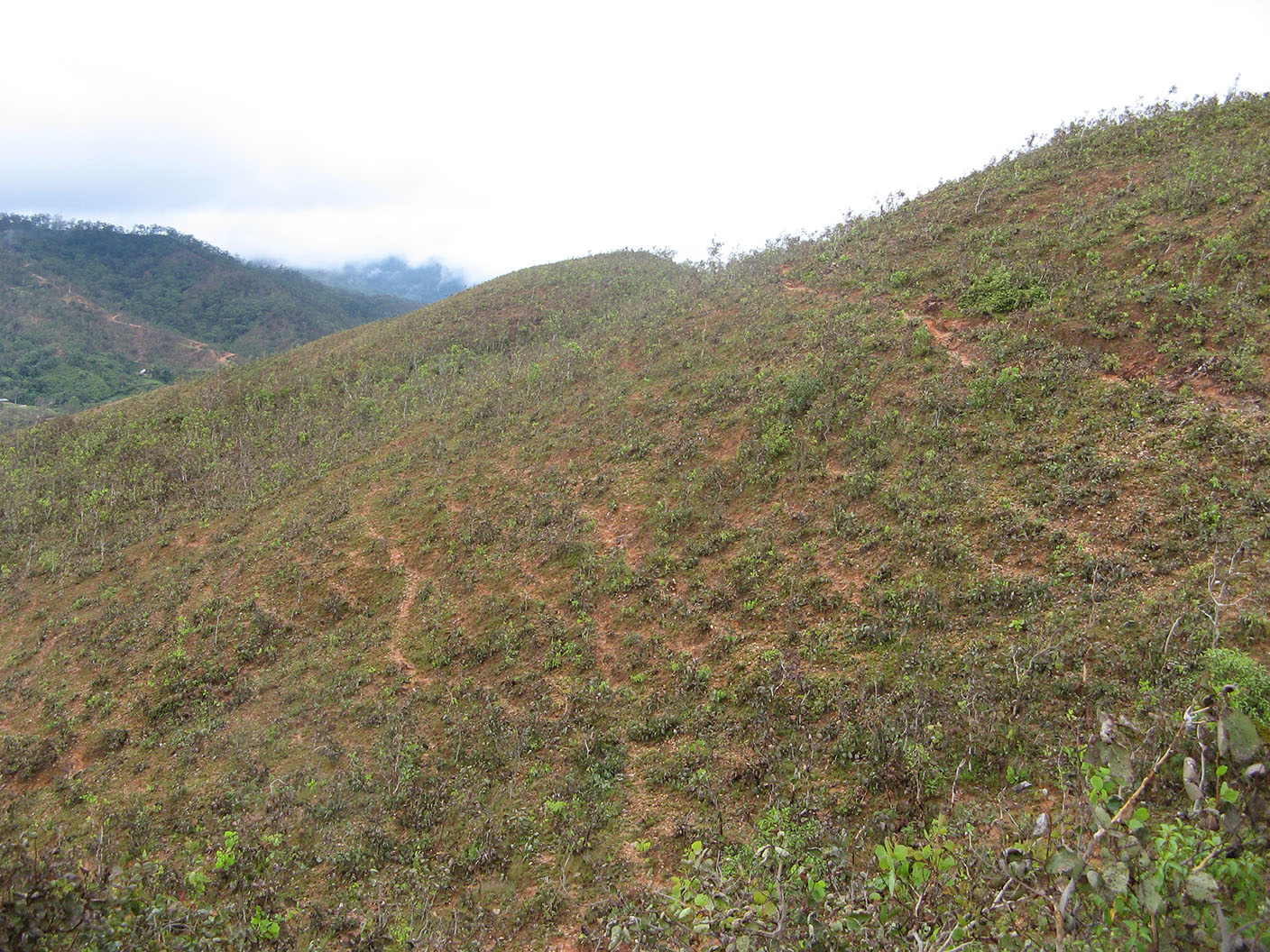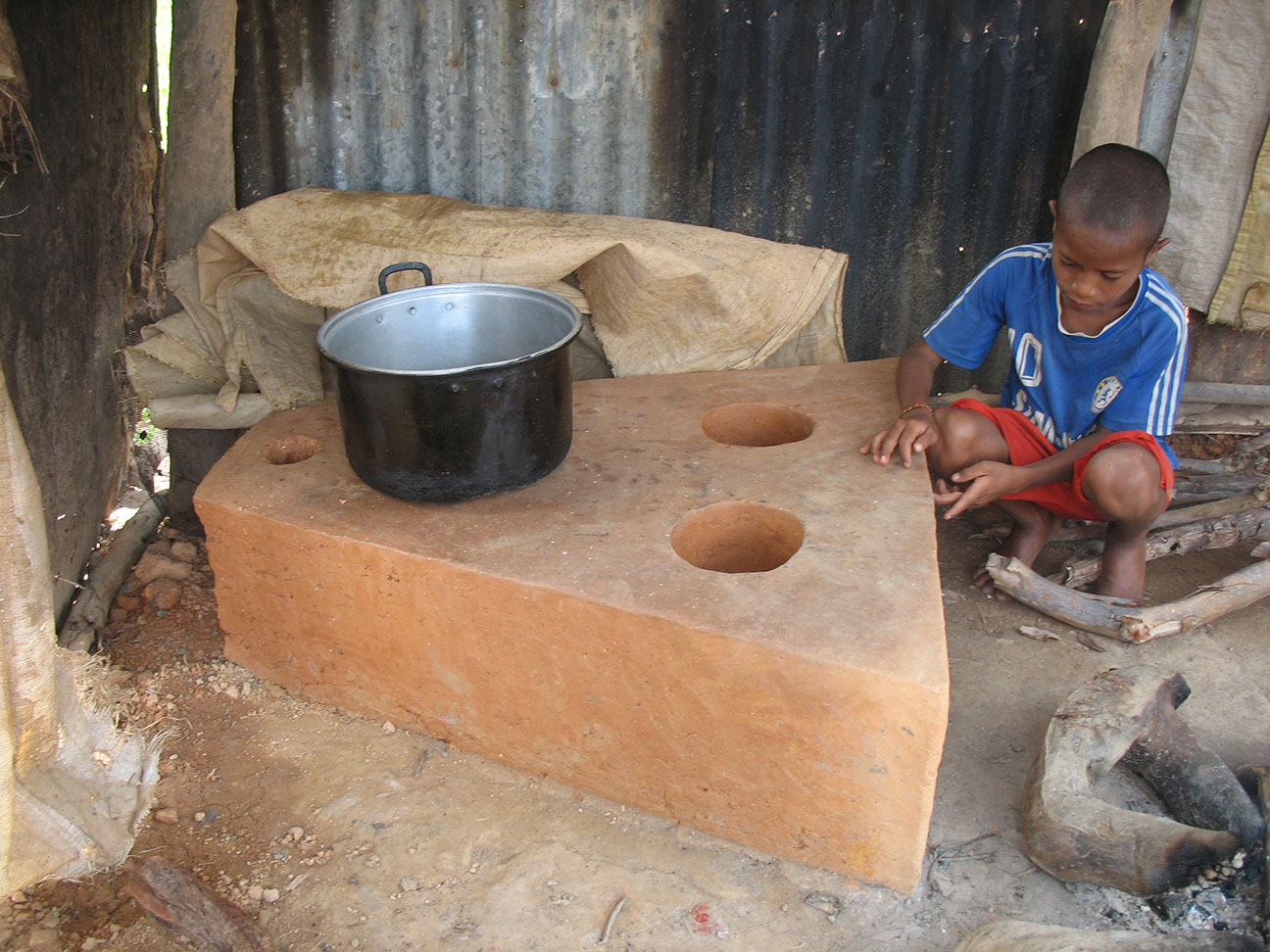Timor-Leste terrain recovers from the ashes of 'slash and burn'
World Vision projects to help rural Timorese revitalize forests, develop sustainable livelihoods and cope with a harsh and changing climate are making ‘excellent progress’, says an Australian food and agriculture expert.
Tony Rinaudo assessed the projects in the Aileu and Bobonaro districts over 12 days in April 2013. The remarkable transformation in parts of Timor-Leste’s terrain reminded him of the phoenix, the bird in Greek mythology that gains new life by rising from the ashes of its predecessor.
“Aileu is literally being re-born from the ashes of continuous slash and burn agriculture, and indiscriminate burning and wood harvesting from the forest.”
Based in World Vision’s Melbourne office, Tony is the research and development advisor in Natural Resources for the Food Security and Climate Change team. For centuries, he says, Timorese farmers used the practice of slash and burn to maintain soil fertility in the mountains and hills. With fewer people and large areas forested, it offered short-term gains. However, Timor-Leste’s population has doubled to 1.1 million in the last 50 years and forest cover in many districts has disappeared.
Soils lose not only organic matter, structure and fertility, but also their capacity to hold moisture. The land bakes in Timor-Leste’s seven-month dry season but in the wet months, torrential rain is destructive. “Degraded soils are much more easily eroded and, on sloping land, more prone to landslides,” he says.
Forest on a dry Aileu hillside degraded by overgrazing and slash and burn.
Worried farmers told him seasonal extremes are becoming harsher. Rains are more intense but arrive later. Dry seasons are longer and hotter, with the higher temperatures and water shortages causing stock losses and damaging crops.
In the long term, Tony says, climate change combined with slash and burn agriculture, population pressure and intensive grazing will make the land unusable, a devastating scenario in a nation where 72 percent of the people still live in the countryside and two-thirds of households grow crops.
World Vision saw a solution in its highly successful projects in Ethiopia and Niger. These promote practices such as conservation farming, mulching, composting and intercropping to regenerate forests, manage weeds, develop seed storage and seedling nurseries, stabilize steep hillsides, and grow locally produced organic food.
Tony, a pioneer of these projects, helped devise a unique scheme for Aileu called ‘Building Resilience Against a Changing Climate and Environment’ (BRACCE). In 2011, after training by World Vision’s technical specialists, young Timorese coordinators began travelling on motorbikes, four-wheel drives and on foot to remote villages to talk with Aileu farmers. Farmer groups and demonstration plots of 1-2 hectares to trial new crops and methods were set up.
World Vision facilitator Lucas Neno (with backpack and machete) talks to a group of local farmers about forest management.
A key initiative was Farmer Managed Natural Regeneration (FMNR) to regenerate trees and shrubs from the ‘underground forest’ of living tree stumps that remained in degraded forest areas. FMNR’s secret, and why it is so cheap and so quickly can have a widespread impact, is that tree planting or tree nurseries are not needed. Seemingly bare hillsides may in fact contain seeds, living tree stumps and roots which can sprout new stems and regenerate trees, if given a chance. By carefully pruning and caring for the shoots sprouting from the stumps, FMNR breathes life back into the original land cover.
FMNR uses the traditional practice of coppicing, whereby trees make new growth from stumps or roots that have been cut down. These young eucalypt stems will be harvested when ready, and the cycle will begin again.
At the same time, BRACCE encourages the planting of high value timber and fruiting species. Indigenous timbers such as teak, mahogany, candlenut and sandalwood that attracted Portuguese and other traders centuries ago were replanted, as were coffee and fruit and spice trees including mango, cloves, jack fruit and cinnamon.
Farmer groups were also shown how to grow nitrogen-fixing fodder trees for shade and wind protection, mulch crops to increase soil fertility, establish big compost pits and use organic matter from weeds and tree leaves. Small dams and irrigation channels were built in project villages, and slopes were terraced to capture and store water and to halt erosion. Raised bed farming was introduced to avoid water-logging of crops such as maize, cassava, peanuts and sweet potato.
A healthy combination of a tree nursery, terrace planting and saplings in the foreground.
The incidence of bush burning plummeted and soils visibly darkened as black mulch layers of rotting leaves and grasses formed. Pruned branches and slashed weed stems placed on bare soil enabled colonizing species to take root. Whereas in 2011 it was hard to find any trees other than eucalyptus, new species now germinate in the leaf litter.
Wood is still a cheap and popular fuel in Timor-Leste so fuel-efficient cooking stoves have been adopted to help reduce CO2 emissions, cut down overall firewood consumption and save households money. They also minimize the indoor smoke that leads to respiratory diseases in so many women and children.
A newly designed fuel-efficient cooking stove.
Livestock species have also been expanded, but some farmers complained that village animals were destroying their new plantings. It was critical for communities to agree to common rules, so the traditional system for managing conflict, Tara Bandu, was reinstated to help manage land use. Conflicts have reduced as the health of the environment improves and communities work towards common goals.
Farmers know what they are aiming to achieve, Tony says. Afonso Beremau from the Rarema sub village of Hularema told him: “We want a future for our children. We want to restore the forest, to protect our soil and water source. Our dream is to make this forest better than it is now.”
Farmer Manuel da Silva on new terraces growing a mix of sweet potatoes and pineapples.
World Vision expects that BRACCE, with a total budget of $US2,602,757 over five years to 2016, will benefit 12,000 people across four Aileu sub-districts.
Its success, and particularly the impact of FMNR, has caught the attention of government officials. World Vision is now organising a national FMNR conference in April 2014 to showcase the scheme and stimulate its uptake by Timor-Leste’s Ministry of Agriculture and Fisheries, other NGOs and communities.


